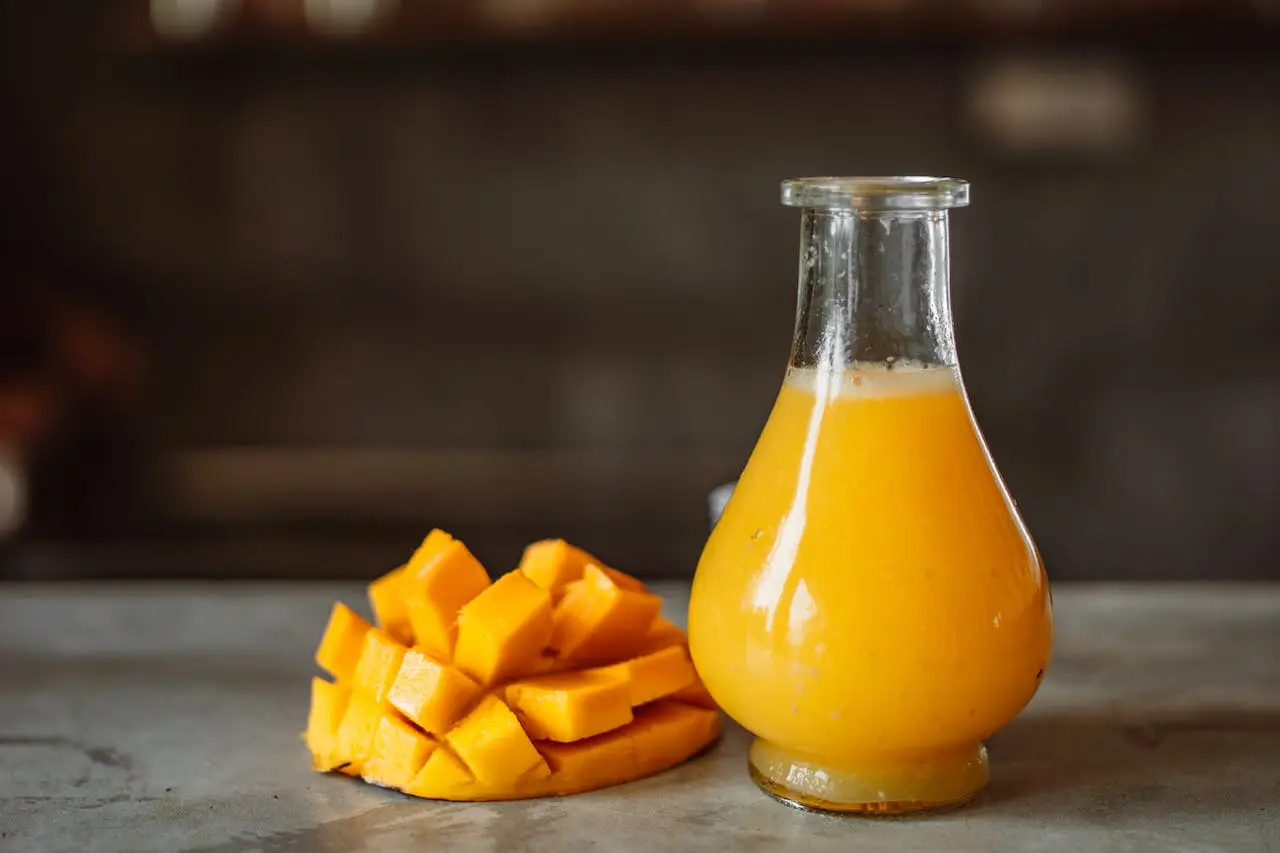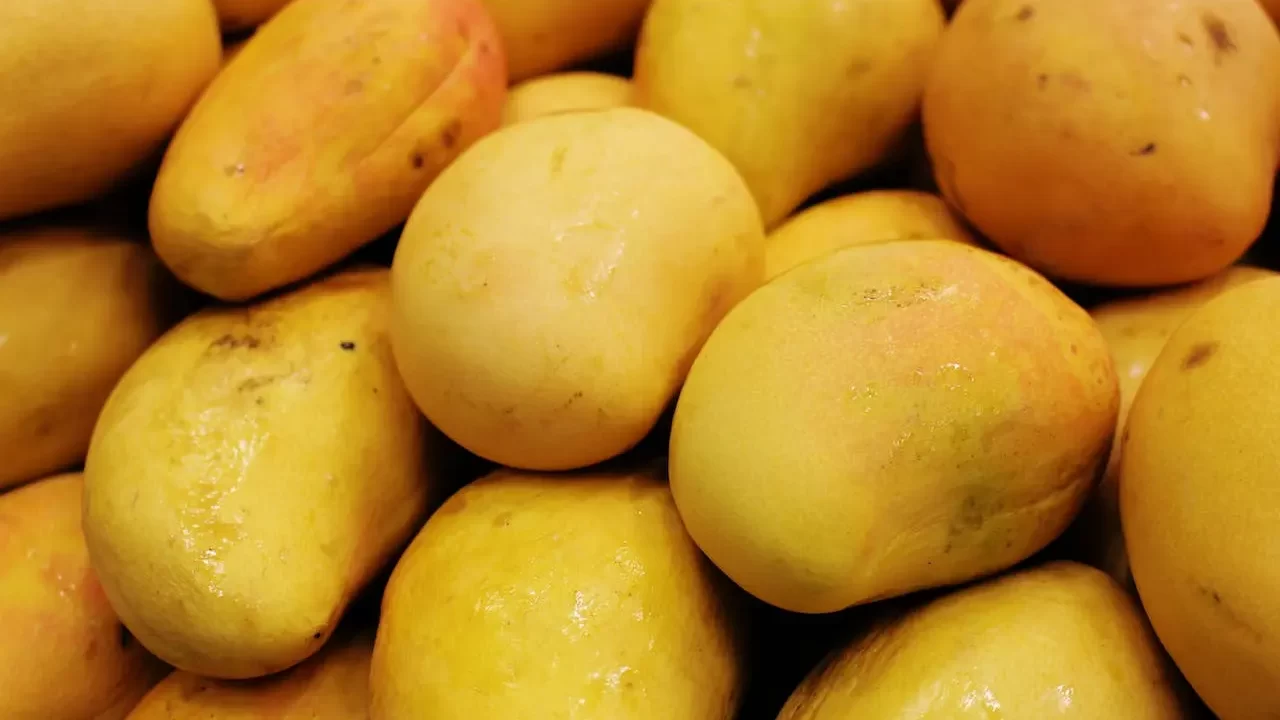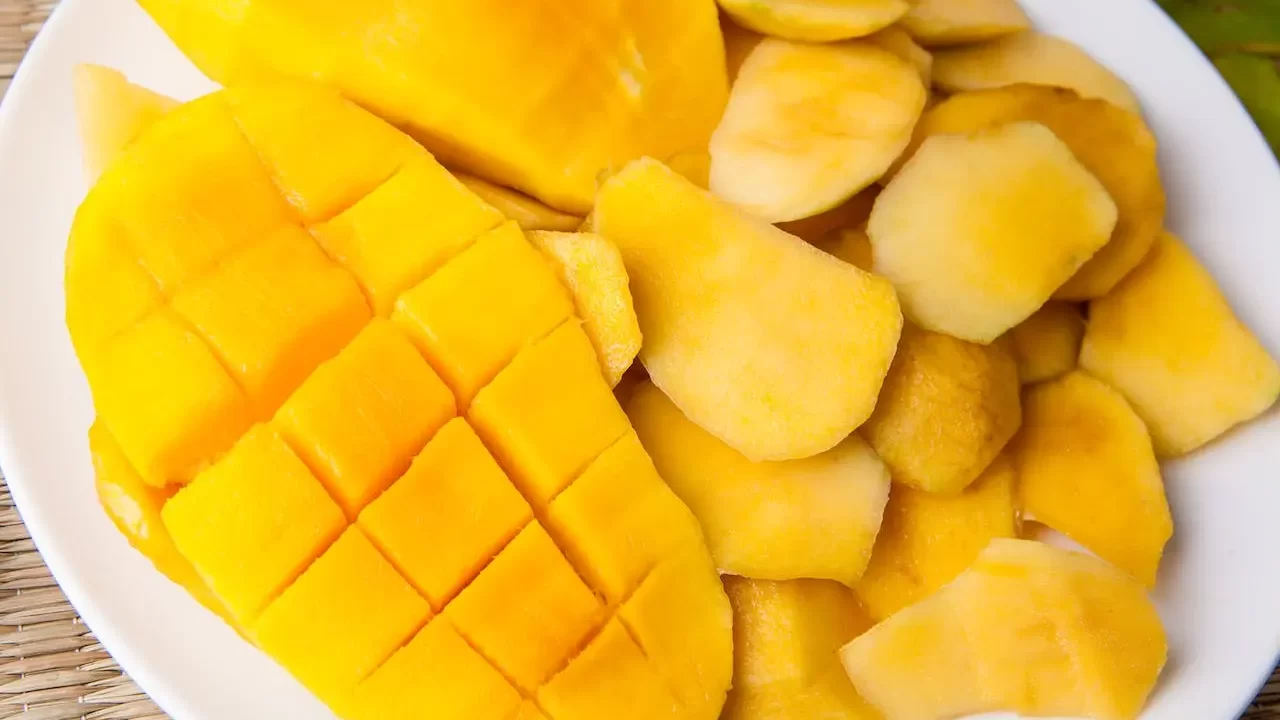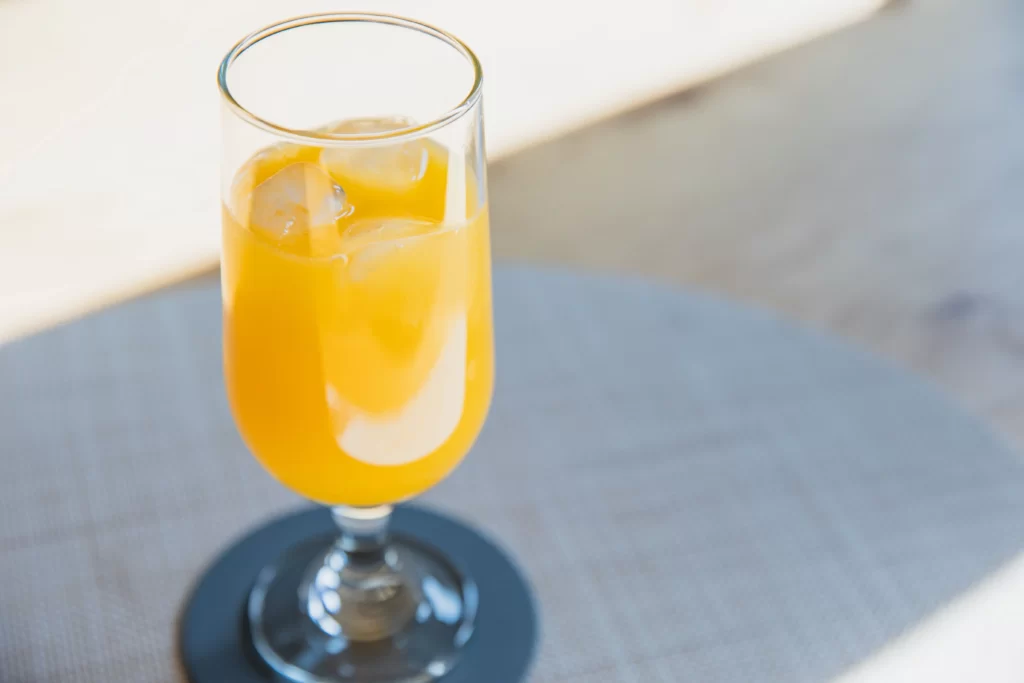How to Make Mango Juice Without Blender?

Mango juice is a beverage made from the extraction of the liquid content of mango fruit. It is a popular and refreshing drink enjoyed around the world, especially in tropical regions where mangoes are abundant.
Mango juice can be commercially produced and purchased in stores, or it can be made at home using fresh mangoes.
In this guide, we’ll walk you through the step-by-step process, ensuring a delicious and refreshing outcome.
Table of Contents
Ingredients
- Ripe Mangoes
- Water
- Knife
- Potato Masher or Fork
- Fine Mesh Sieve or Cheesecloth
- Glass jars or bottles for storage
How to Make Mango Juice Without Blender?
Making mango juice without a blender is possible, though it may require a bit more effort.
Here’s a simple method using your hands and a few basic kitchen tools:
1. Selecting the Right Mangoes
To create a perfect mango juice, start by choosing ripe and juicy mangoes. Look for mangoes with vibrant colors, a sweet aroma, and a slight give when gently pressed.

Different Varieties like Alphonso, Ataulfo, or Haden are known for their sweetness and juiciness. Consider mixing different varieties for a unique flavor profile.
2. Peeling and Extracting Mango Pulp
Once you’ve selected the perfect mangoes, it’s time to peel and extract the pulp. Begin by slicing off the top and bottom of the mango.

Stand the mango upright on one of its flat ends and carefully cut the skin away in strips, following the contour of the fruit. Then, slice the mango flesh away from the pit. Cut the mango into small chunks or slices, ensuring that you extract as much pulp as possible.
3. Mashing the Mangoes
With the mango chunks ready, you can now start the process of mashing. You can use a fork, potato masher, or any utensil with a flat surface to mash the mango chunks in a bowl.
Continue mashing until you achieve a smooth consistency. This step might require a bit of effort, but the result will be worth it.
4. Straining the Mashed Mango
To eliminate any fibrous or stringy bits from the mashed mango, strain the mixture. Use a fine mesh strainer or cheesecloth over a bowl to separate the juice from the pulp.
Press the mashed mango against the strainer to extract as much liquid as possible. This step ensures a smoother and more refined mango juice.
5. Adjusting the Consistency and Flavor
At this stage, you can adjust the consistency and flavor of your mango juice. If you prefer a thinner juice, add a small amount of water and mix well.
For added sweetness, you can incorporate a natural sweetener like honey or agave syrup. Experiment with lime or lemon juice to enhance the overall flavor profile.
6. Serving
You’ve successfully crafted mango juice without a blender. Pour your homemade mango juice into glasses over ice for a refreshing treat. Consider garnishing with mint leaves or a slice of lime for an extra touch of elegance.

What are the Health Benefits of Drinking Mango Juice?
Mango juice, derived from the succulent and flavorful tropical fruit, offers a plethora of health benefits, making it a delightful addition to a balanced diet. Here are some of the notable health benefits of consuming mango juice:
1. Rich in Vitamins
Mango juice is a potent source of essential vitamins, particularly vitamin C and vitamin A. Vitamin C is crucial for immune system function, collagen formation, and antioxidant defense, while vitamin A supports vision, skin health, and immune function.
2. Antioxidant Properties
Mangoes and their juice are packed with antioxidants such as beta-carotene, quercetin, and astragalin. These antioxidants help neutralize free radicals in the body, reducing oxidative stress and inflammation, and contributing to overall cellular health.
3. Boosts Immune System
The high vitamin C content in mango juice plays a vital role in strengthening the immune system. Regular consumption may help the body fend off infections, viruses, and other illnesses.
4. Hydration
Mango juice is an excellent hydrating beverage. Its natural sweetness makes it a tasty alternative to plain water, encouraging proper fluid intake and helping to prevent dehydration.
5. Supports Eye Health
The high levels of vitamin A in mango juice contribute to eye health. Vitamin A is essential for maintaining the health of the cornea and preventing night blindness and other vision-related issues.
6. Improved Skin Health
The antioxidants in mango juice, including vitamin C and beta-carotene, contribute to healthier skin by promoting collagen production, reducing the signs of aging, and protecting against UV damage.
It’s important to note that while mango juice offers numerous health benefits, moderation is key, especially for individuals watching their sugar intake. Additionally, consuming whole mangoes and incorporating a variety of fruits and vegetables into the diet ensures a well-rounded and diverse range of nutrients.
Is Mango Juice Acidic?
Yes, mango juice is generally acidic. Mangoes, the primary ingredient in mango juice, are naturally acidic fruits. The acidity in mangoes comes from organic acids, primarily citric acid and malic acid. The pH of mangoes typically ranges from 3.4 to 4.8, classifying them as mildly acidic fruits.
When mangoes are processed into juice, the acidity is retained, and as a result, mango juice tends to be slightly acidic. The pH of mango juice usually falls within the range of 3.5 to 4.5. The acidity contributes to the characteristic tangy and refreshing taste of the juice.
It’s worth noting that the level of acidity can vary depending on factors such as the specific variety of mango, its ripeness, and the processing methods used to make the juice. While mango juice is acidic, many people enjoy its vibrant flavor, and the juice also provides a range of nutrients, including vitamins A and C, as well as dietary fiber.
Frequently Asked Question
What should I do if I don’t have a strainer for removing pulp when making mango juice?
You can use a clean cloth, cheesecloth, or even a fine mesh sieve to strain the juice and remove pulp.
Conclusion
Making mango juice without a blender may require a bit more effort, but the results are well worth it. You can enjoy a refreshing and homemade beverage with the right mangoes and a few simple steps. Experiment with different varieties of mangoes and flavor enhancements to create your signature mango juice. Cheers to the joy of sipping on your very own handcrafted mango delight!